German Plum Cake (Zwetschgenkuchen)
This post may contain affiliate links. See my disclosure policy.
This authentic German Plum Cake recipe, known as Zwetschgenkuchen or Zwetschgendatschi, is made just the way you know and love it from Germany! A yeast-based cake with juicy plums and a sweet streusel topping, this extraordinarily delicious cake is one of my very favorites and is the way my Mutti and Oma made it!
For more fruity German cakes be sure to also try our German Apple Cake, Rhubarb Streusel Cake, and while not exactly “cake,” our Apple Strudel is a must!
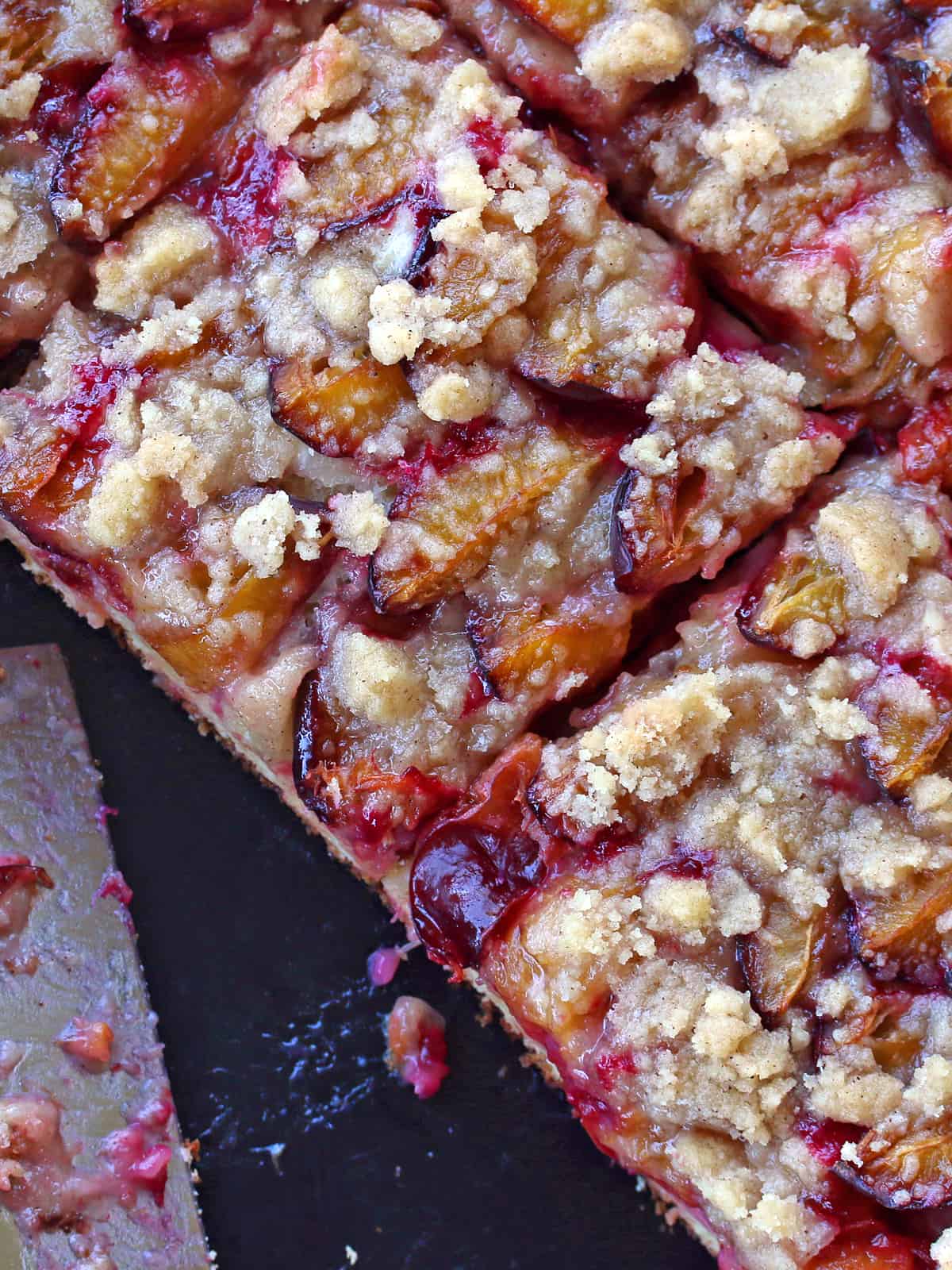
Depending on which region of Germany you’re in, German plum cake goes by a variety of names including Zwetschgenkuchen, Zwetschgendatschi, Quetschekuche or Pflaumenkuchen. I know, they’re all tongue-twisters! :)
Variations exist throughout the regions of Germany with some versions using a yeast dough while others use a shortcrust pastry known as Rührteig. Some have a streusel topping while others omit it. And some people make them round and taller while others make them rectangular in the style known as “Blechkuchen” (sheet pan cake). But whichever pastry crust is used, with or without streusel, and whether it’s round or rectangular, all of these versions showcase the plump, juicy, sweet European plums known as Italian plums.

Which Plums Do I Need to Make German Plum Cake?
To make proper German plum cake you really need Italian plums. These are small and oval-shaped and are far meatier than their Asian plum cousins. Fleshier with a lower moisture content is important because you want to have a moist cake, not a mushy cake. Italian plums are considered the most ideal for cooking and baking not only because of their texture but also because their flavor becomes more complex and delicious through cooking. Italian plum season is short, usually from September through early October, and Germans know how to seize the opportunity when it’s there. So wait patiently for plum season and then hit your local farmer’s markets for some Italian plums. Alternatively you can also use frozen Italian plums; just be sure to thaw and very thoroughly drain them before using them.
We were so lucky to have our own Italian plum trees when we lived in Washington State. When we moved to Virginia a few years ago we immediately got to work planting an orchard of fruit trees, including some Italian plums. They’re not yielding a lot of fruit yet, but they’re getting there and I’ll be ready for them!
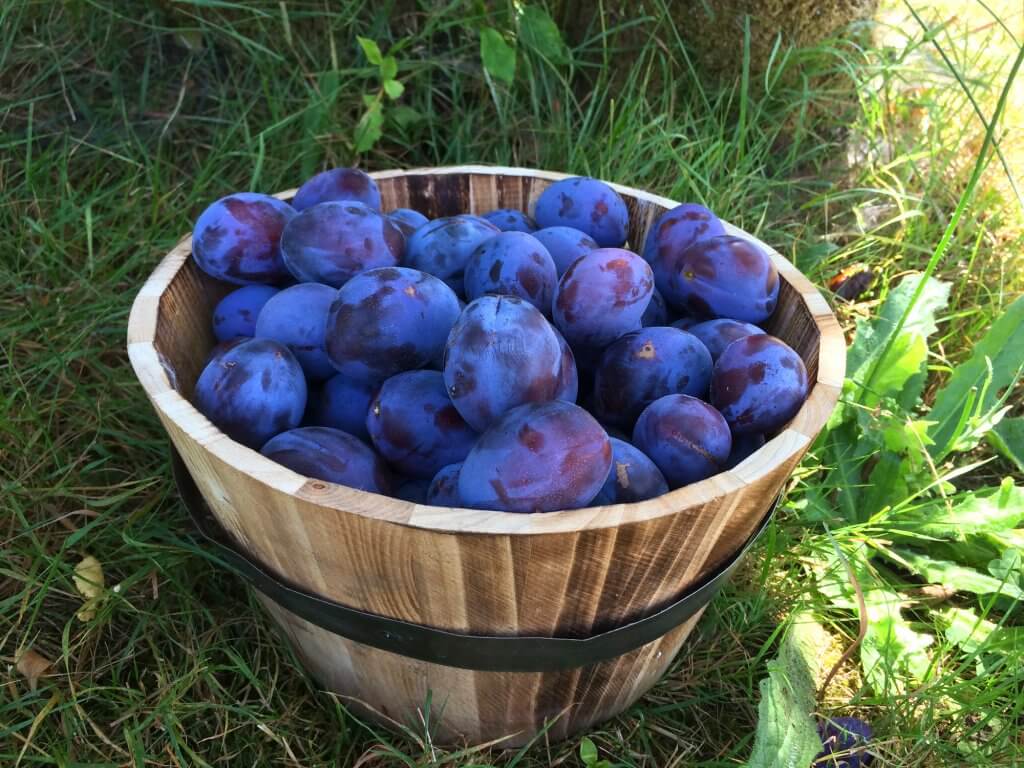
The version of German Plum Cake that we’re making today is my personal favorite. It’s made with yeast dough, which is more time-consuming than the simpler Rührteig (shortcrust pastry) versions, but it’s far superior in my opinion. This traditional version is also sprinkled with a streusel topping. This Zwetschgenkuchen recipe is the way my Mutti and Oma made it and is typical of where I’m from in Baden-Württemberg, though this version is popular throughout Germany. This type of Zwetschgenkuchen is typically made on a Backblech (a baking sheet) versus in a round springform and cut into squares for serving.
Like most German cakes, this German plum cake is not overly sweet. It has a nice balance between sweet and tart with just a touch of warmth from the cinnamon. The riper the plums the sweeter the cake will be.
This German plum cake will keep for 2-3 days. And although the streusel will get soft, the cake tastes even better the day after baking as the juices from the plums have time to penetrate the dough.
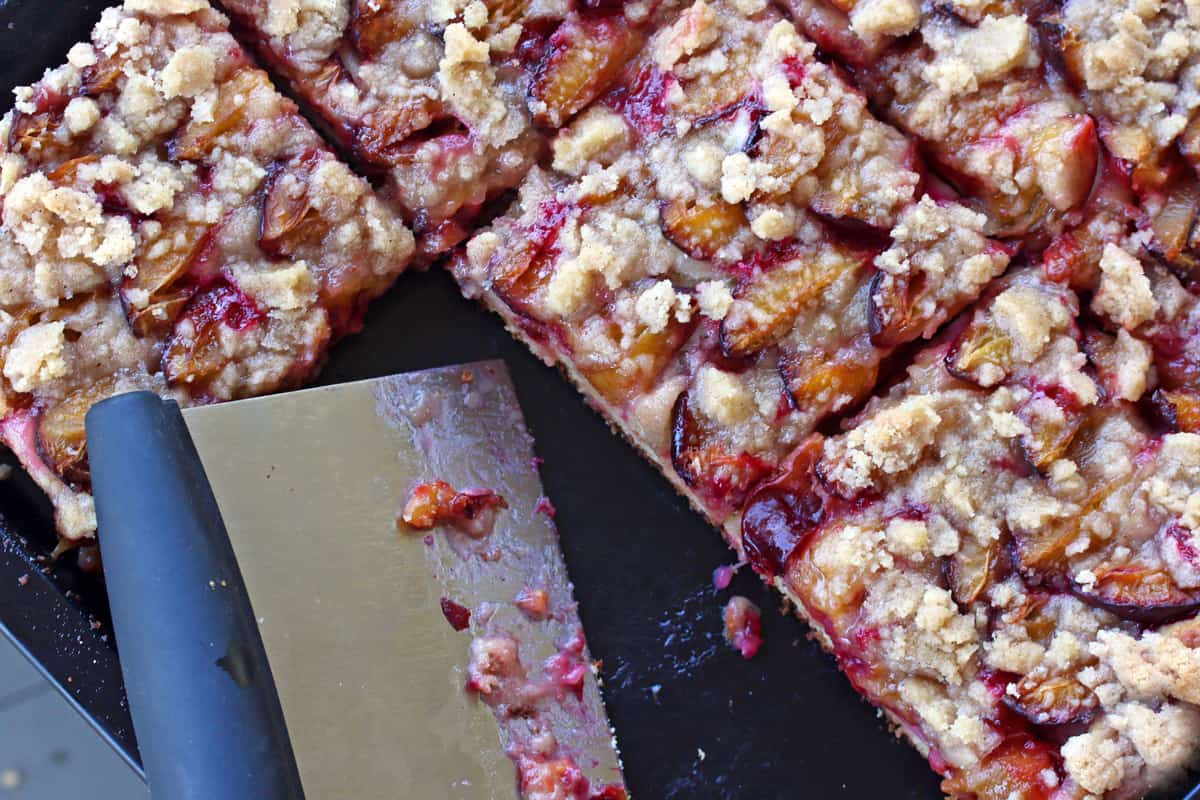
Can I Use Other Fruits?
You sure can! This recipe is also delicious using other stone fruits like apricots, peaches and nectarines.
Can You Freeze German Plum Cake?
Yes, you can. I generally recommend eating it within a couple of days but if you have more leftovers than you can manage, this can be wrapped and put in a freezer container for up to a month. Let it thaw in the fridge overnight.
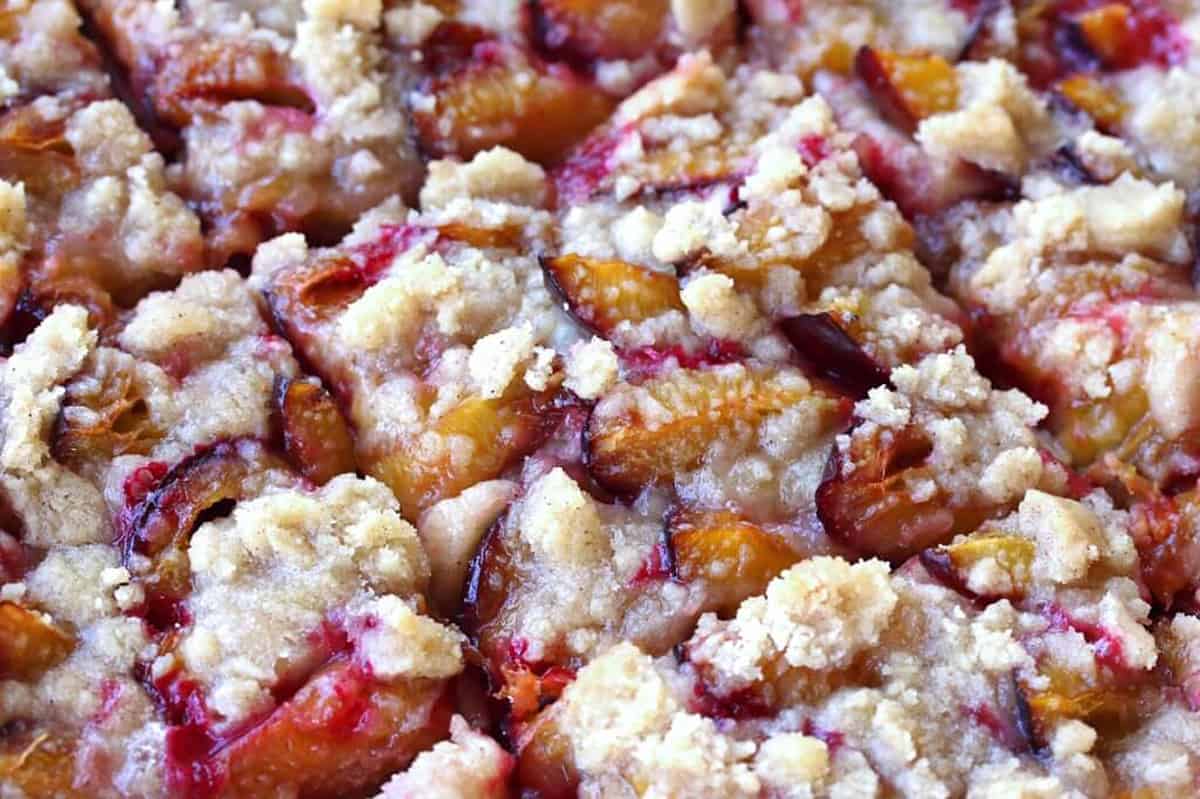
German Plum Cake Recipe
Let’s get started!
Dissolve the yeast into the warm milk and let is sit for 5-10 minutes until frothy.
Place the flour, sugar and salt in the bowl of a stand mixer and pour in the yeast mixture, melted warm (not hot) butter, eggs and vanilla extract. Give it an initial stir to combine the ingredients and then attach a dough hook and knead it on the bread setting (“2”) for 4-5 minutes.
The dough will be sticky but should hold together fairly well. It will not be firm enough to knead into a ball, think of it more as a thick batter.
Cover it loosely with plastic wrap and set it in a warm, draft free place to rise for an hour or until about doubled in size.
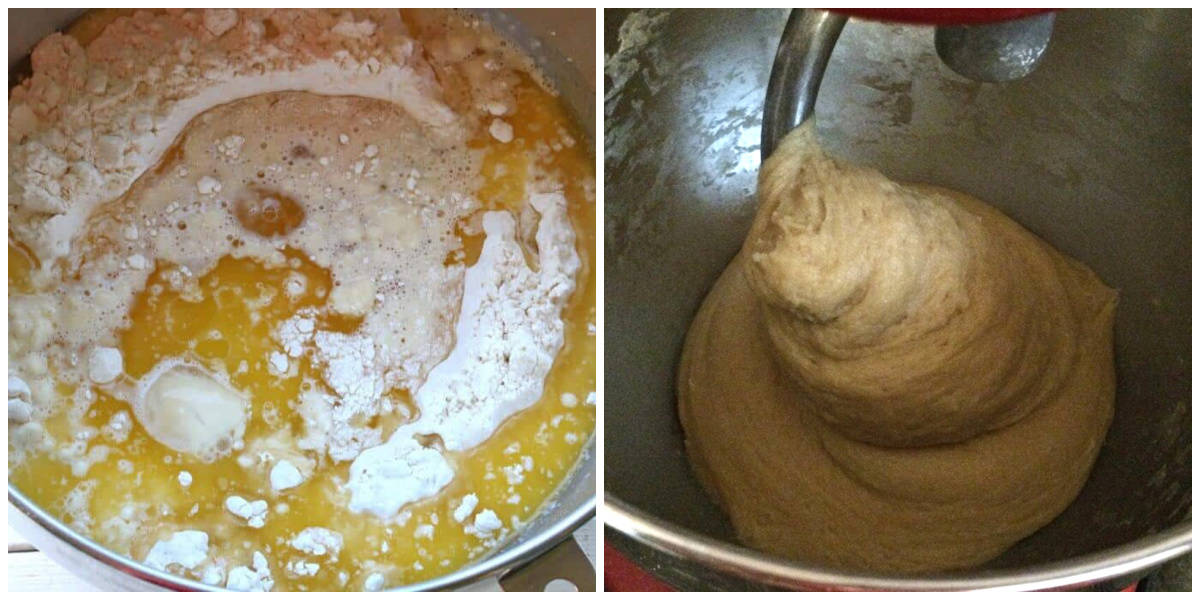
Generously butter a large jelly roll pan (at least 18 inches in length and about 13 inches wide) or, like I’m using and as pictured below, a German Backblech if you have one (the one I’m using in the picture I brought with me from Germany).
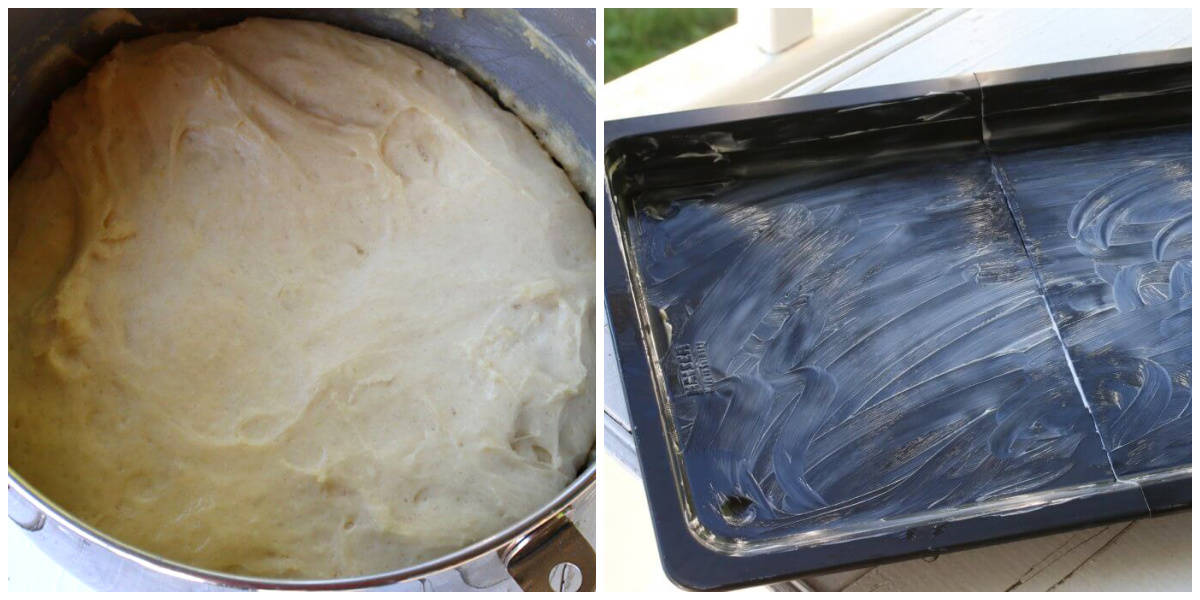
Use your hands to spread the dough out across the full length of the pan, pressing it up against the sides. It’s yeast dough so it will resist, but just keep pushing it back into position the best you can. Once you put the plums on it, those will help keep it in place.
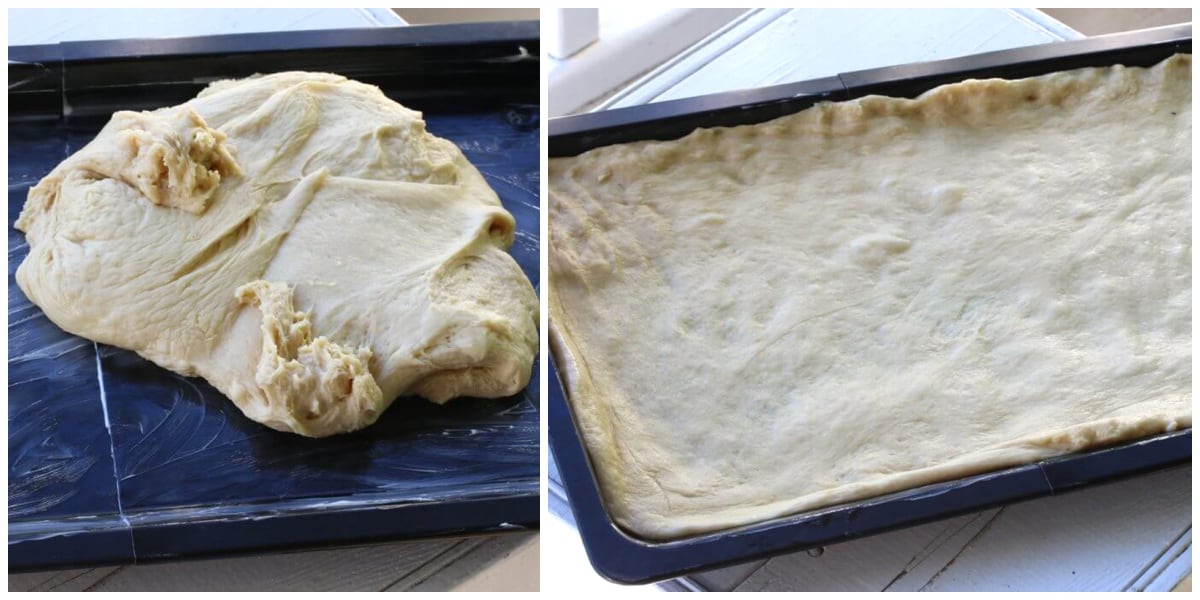
Time for the plums! The riper the plums the sweeter the cake will be. However, if they’re overly ripe – meaning mushy – they’ll be even mushier on the finished baked product, so keep that in mind too.
Cut the plums in half and remove the pits. Then slice the plums in half again, slicing each plum into quarters.
Lay the plums close together in rows over the whole length of the dough on the sheet pan.
If you want your cake a bit sweeter you can sprinkle it *lightly* with sugar or cinnamon-sugar if you prefer more cinnamon. I emphasize “lightly” because the more sugar you add the more watery the cake will be as the sugar liquifies during baking and your streusel will also “melt” in contact with it.
Set the pan in a warm place and let it rise for up to another hour.
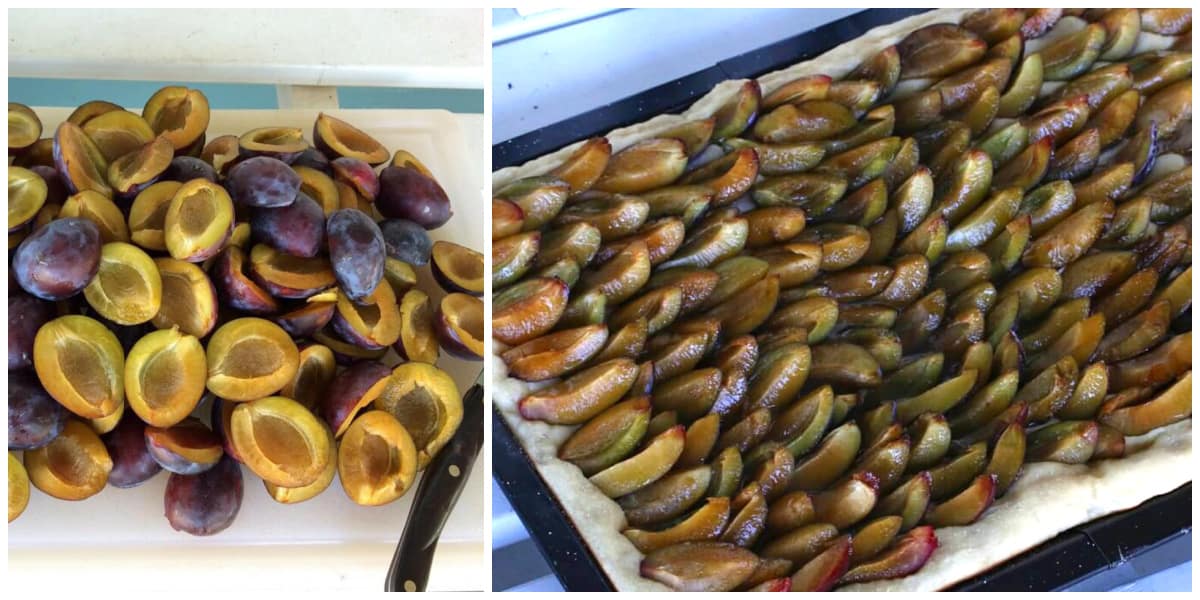
Now let’s make the streusel topping. Place all the ingredients in a medium-sized bowl and use your fingers to bring it all together. Work with the mixture until it’s thoroughly combined and forms a rough sand and clumpy texture.
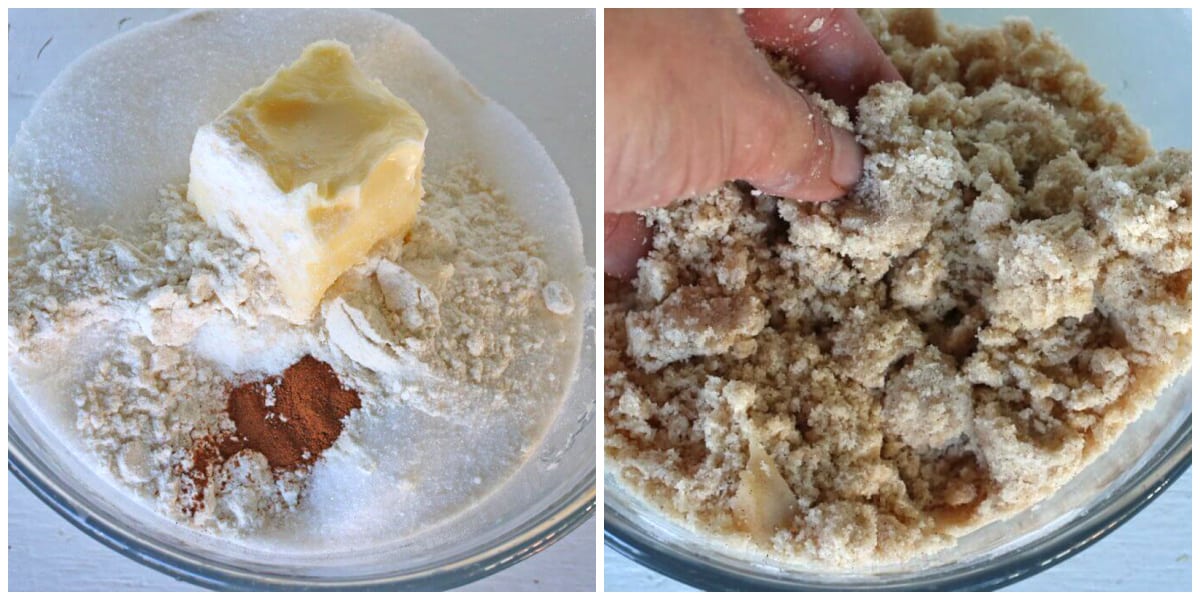
Sprinkle the streusel over the top of the cake.
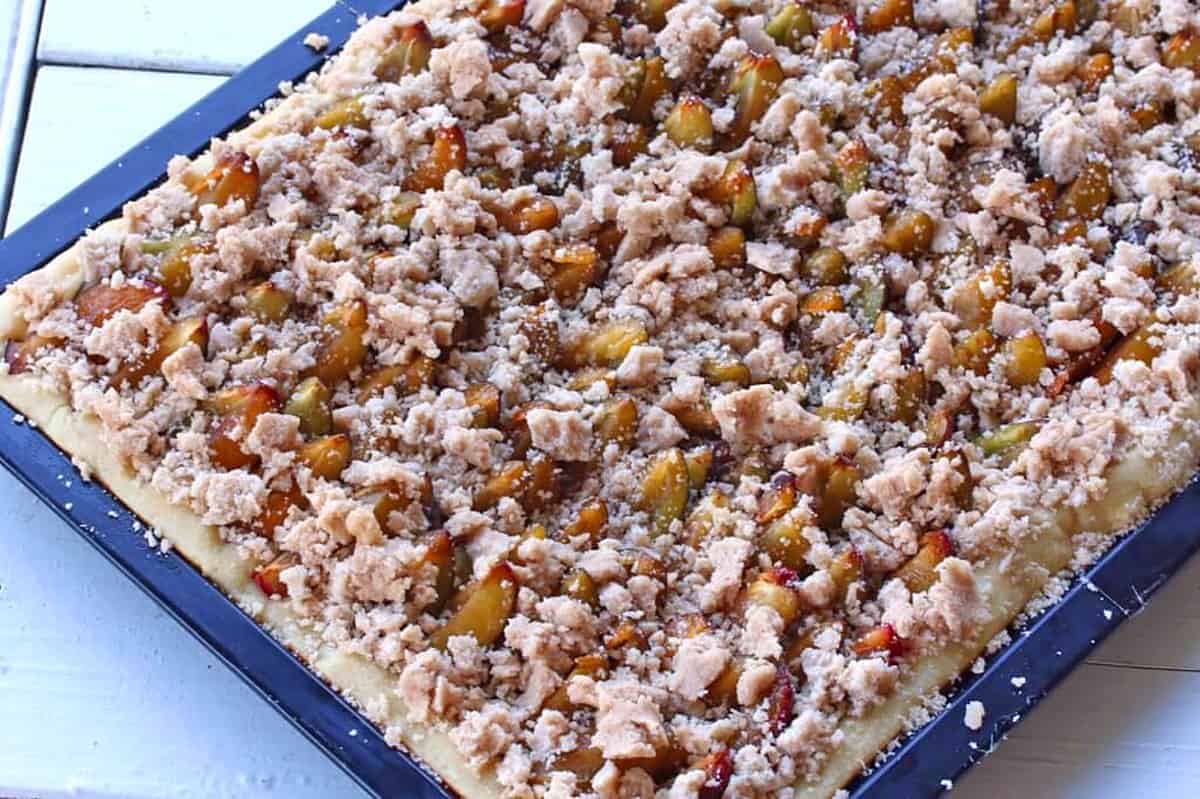
Bake the cake on the middle rack of the oven preheated to 350 degrees for 30-35 minutes or until the top is golden.
Let the cake sit for at least 10 minutes before slicing to let some of the liquid set.

Slice the cake into squares.
A tool that I use that’s really handy and works like a charm for sheet cakes and many other things is the OXO Multi-Purpose Scraper & Chopper.
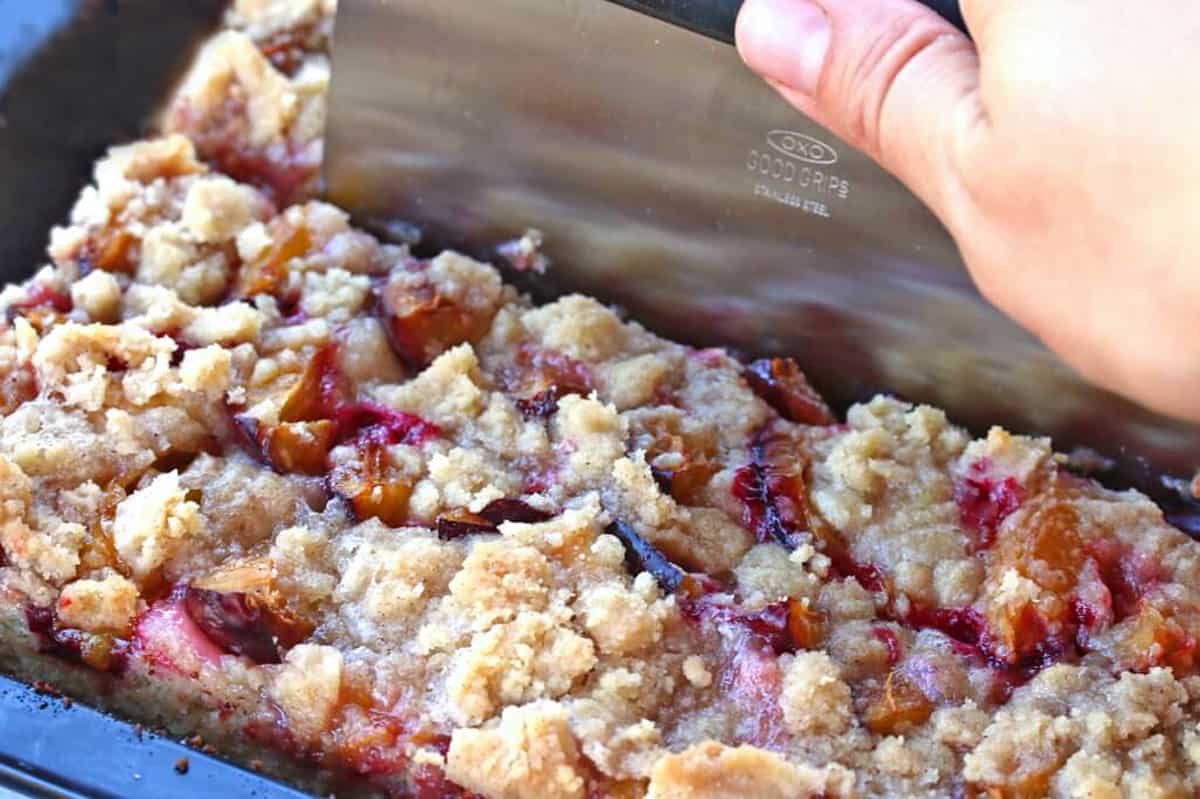
Serve and enjoy!
Guten Appetit!

For more delicious German desserts be sure to try our:
- German Apple Cake
- German Cheesecake
- Berliner
- Dampfnudeln
- Germknödel
- Cherry Marzipan Streusel Cake
- Gugelhupf
- Stollen
- Rhubarb Streusel Cake
- Pfeffernüsse
- Lebkuchen
- Zimtsterne
Save This Recipe
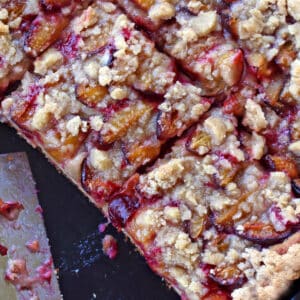
German Plum Cake (Zwetschgenkuchen)
Ingredients
- 3 + pounds Italian plums ,cut into quarters, pits removed
- 1 cup warm milk , *start with 3/4 and add extra to the dough as needed
- 1 1/2 tablespoons dry active yeast
- 4 cups all-purpose flour
- 3/4 cup sugar
- 1/2 teaspoon salt
- 1 stick butter (1/2 cup melted but not hot)
- 2 eggs
- 1 teaspoon quality pure vanilla extract
- For the Streusel:
- 1 cup all-purpose flour
- 1 cup sugar
- 1 teaspoon ground cinnamon
- 1/2 cup butter ,at room temperature
Instructions
- Dissolve the yeast into the 3/4 cup warm milk and let is sit for 5-10 minutes until frothy.
- Place the flour, sugar and salt in the bowl of a stand mixer and pour in the yeast mixture, melted warm (not hot) butter, eggs and vanilla extract. Give it an initial stir to combine the ingredients and then attach a dough hook and knead it on the bread setting ("2") for 4-5 minutes, adding the remaining 1/4 cup milk as necessary. (The dough will be sticky but should hold together fairly well. It will not be firm enough to knead into a ball, think of it more as a thick batter.) Cover it loosely with plastic wrap and set it in a warm, draft free place to rise for an hour or until about doubled in size.
- Generously butter a German Backblech extended to full length or a large jelly roll pan (at least 18 inches in length and 1 inch sides but even then the crust will be thicker than with the Backblech).
- Use your hands to spread the dough out across the full length of the pan, pressing it up against the sides. (It's yeast dough so it will resist, but just keep pushing it back into position the best you can. Once you put the plums on it, those will help keep it in place.) Lay the plums close together in rows over the whole length of the dough on the sheet pan. (If you want your cake a bit sweeter you can sprinkle it *lightly* with sugar or cinnamon-sugar if you prefer more cinnamon. I emphasize "lightly" because the more sugar you add the more watery the cake will be as the sugar liquifies during baking and your streusel will also "melt" in contact with it.)
- Set the pan in a warm place and let it rise for up to another hour.
- To make the streusel: Place all the ingredients in a medium-sized bowl and use your fingers to bring it all together. Work with the mixture until it's thoroughly combined and forms a rough sand and clumpy texture. Sprinkle the streusel over the top of the cake.
- Bake the cake on the middle rack of the oven preheated to 350 degrees for 30-35 minutes or until the top is golden.
- Let the cake sit for at least 10 minutes before slicing to let some of the liquid set. Slice the cake into squares and serve.
Notes
Nutrition
Originally published on The Daring Gourmet September 8, 2016



















So fantastic! Well outlined description of the how to. And the perfect “adult “ dessert and a real favorite, meaning very flavorful and not too awfully sweet!!! Putting it together is easy, it just needs the time to rise, when you can do other things. Our Boston area DeMoulas “Market Basket” has the plums,(slightly more russet color than the deep purple shown) in autumn for a good price. I hope that the lady in DC was able to make it for her moms 100th birthday! Seems like someplace in DC ought to have ‘em.
Awesome, JP, thanks so much!
I am so happy to have found this recipe. I marked a lot more to make and just acquired Rose water to make marzipan! Thank you so much!
We loved this recipe tonight although I could not find Zwetschgen but used regular dark plums. I might have to plant my own tree.
I’m so glad you enjoyed it, Mimi, thank you! You can never go wrong planting your own fruit trees, lol, all you need is some patience :) I think you’re going to really LOVE the marzipan. Thanks so much for the feedback!
I’m actually on here today because I picked up some plums the other day to make your French Almond Plum Cake. I came back on the site to see the photo of how you laid out the plums. That’s when I saw you also had a recipe for Pflaumenkuchen. My mother was from near Wangen/ Stuttgart, and she always made the fruit sheet cakes, whether with plums, apples or peaches. I’ve done it myself, but not with any real recipe for the dough. Her recipes were verbal, and by saying, “about this much flour to a packet of yeast, etc., and knead it til “it feels right.” She passed away many, many years ago, so I’ve done it by what I remember, and keep my fingers crossed. I’ve mostly done apples or peaches (used to have a peach tree), but the plums which I find in the grocery store here (Calif.), that are purple, just don’t seem like the purple Italian plums she used, and I haven’t found others. Long story- short.. I bought “purple plums” and am still planning to make the French Almond Plum cake today. I’m hanging on to this recipe though, too, for the next time I make the sheet pan cake of any variety, and am hopeful my crust will be improved. It’s also really nice that the sheet version of these fruit cakes make a nice breakfast treat as well as a delicious dessert. Our daughter & son-in-law took us to Germany this past May- Berlin, Munich, Dresden, Rothenburg and Bertchesgaden. Such beautiful country, wonderful scenery, fabulous food, and met wonderful people. Thank you for your recipes. Wish me luck on the French Almond Plum. With Fall around the corner there will be Apfelkuchen in our future. I’ll let you know then how I do with the crust.
I’m so glad you stumbled upon our Pflaumenkuchen, Georgette. Every bite of it is a taste of home for me, I think you’ll really enjoy it. How wonderful that you were able to take a tour of Germany! Rothenburg and Berchtesgaden are two of my favorite spots. Happy baking and I hope you enjoy the French Almond Plum Cake as well!
Kimberly, I love your recipe. It is almost that same as my grandmother’s. Would you please give me the dimensions of your pan ?
Also, on August 14, 2018, Katharina wrote to your about the yeast dough that you sink in a bucket. She mentioned 2 cubes of fresh yeast. How many packets or ounces or grams would that be of active dry yeast ?
Thank you very much.
All my best.
Marta
Thank you, Marta! The pan is about 13 x 18. I have the German kind that extends. You can use a pan that’s a little shorter or a little longer, depending on how thick or thin you want the cake crust. Yeast: If my memory serves me right one cube of fresh yeast is the equivalent of 2 1/4 teaspoons of active dry yeast. But I would verify that before you try it :)
Regarding the recipe by Katerina for Kuchen Drowned in a Bucket, how man packets or ounces of active dry yeast are there in 2 cubes of fresh yeast ?
so
So glad I found you,the Pflaum kuchen tasted like meine Oma’s.One question do you put
streusel on fruit then let it raise again or after.No matter it was superb.DANKE Ich komme aus Bad Windsheim, now live in michigan for many years
Thank you, Diana! You put the streusel on after it rises. It probably doesn’t matter much but it’s just that much less weight on top of the dough trying to rise. Bad Windsheim is right next to one of my most favorite German towns, Rothenburg ob der Tauber :)
My mother in law came from Heutingsheim/Freiburg am Neckar and her kuchen is a bit different. She used a pie crust instead of yeast dough and then used farina and milk to cover the plums. I can’t read her recipe and as a result, haven’t had success in trying to duplicate it. Your recipe looks delicious and I will try it soon. I so enjoy reading and trying your recipes, especially the German ones.
Thank you, Grace, I hope you enjoy it. Is her recipe written in old German script or just faded? If it’s written in old German I can probably help with that if you can email me a picture of the recipe.
Hi Kimberly,
This recipe sounds great! I recently tried this recipe with Granny Smith apples,(plums weren’t available at the store at the time), and it turned out excellent! I didn’t have one of your fancy German baking pans, I just used my trusty spring foil pan. Will be using plums the next time I try it.
Question, I understand about adding more sugar to the fruit will make it produce more liquid, but what about adding powdered sugar? Finer granules that cover more surface area? Just a thought.
Also, as an amateur wine maker, I’ve made several batches of plum wine which turned out great after aging, so there’s another idea to use for your huge bounty of plums!!!
Thank you very much for the recipe!
Thanks so much for the feedback, AJ! Powdered sugar “on” things tends to get a little pasty in texture when baked. A good alternative is to sprinkle the powdered sugar on “after” it’s baked and cooled down. That’s commonly done with pastries because in addition to contributing some extra sweetness it also looks pretty.